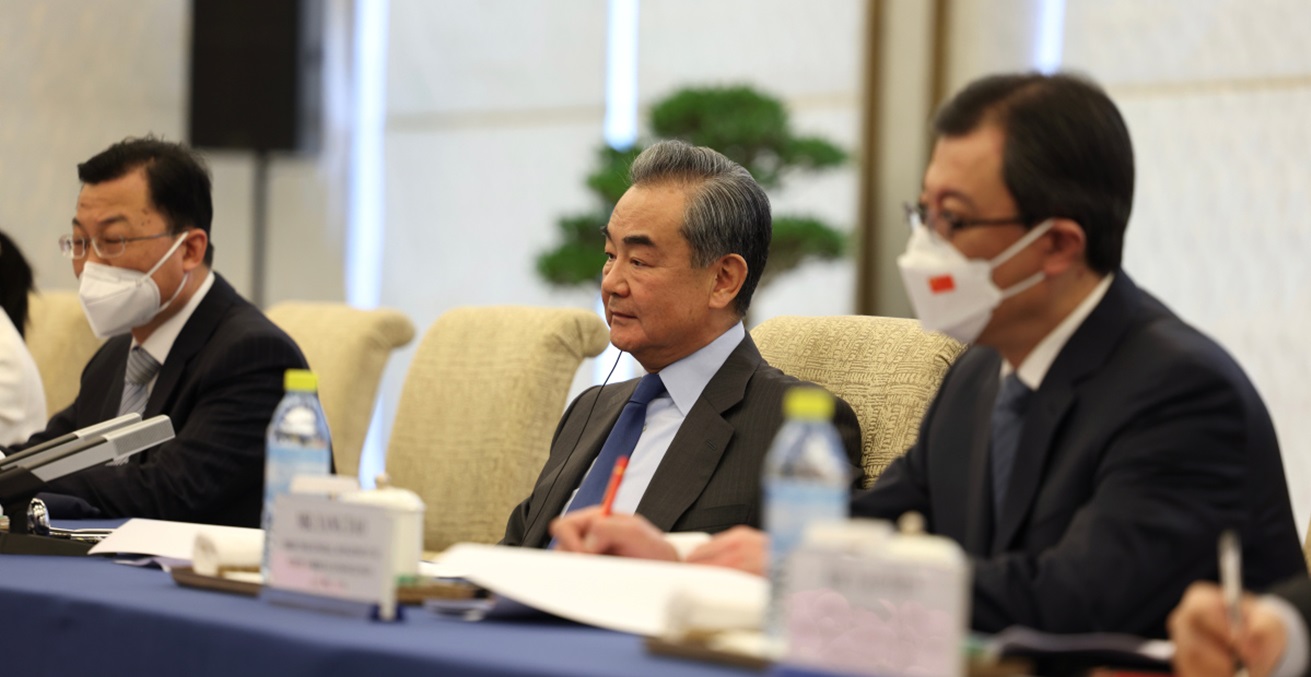Ineffective Communication: Why and How Australia and China Talk Past Each Other

Due to power disparity, diplomatic interactions between China and Australia have been full of misinterpretations about each other’s intentions and demands. China’s suspended death sentence for Yang Hengjun exposed, again, Australia’s sensitive position in this asymmetric relationship, in which China’s great-power-centric mindset ignores Canberra’s needs for strategic autonomy and geopolitical security.
From the viewpoints of Beijing and Canberra, the cause of the recent deterioration of relations seems to be “confusing” because both believe that it is the other who antagonises the relationship. As President Xi Jinping said to Prime Minister Anthony Albanese in their first meeting in November 2023, “There are no historical grievances or conflicts of fundamental interests…We could be partners who trust each other and contribute to each other’s success.” Chinese nationalistic, state-run media interpret this diplomatic rhetoric in plain language, “why did Australia get out in front of China for no reason?” Yet, from the other side of this polemic, the Australian government might be frustrated when China constantly ignores its interest and roughly accuses Canberra of blindly following the United States.
Against this backdrop, the bilateral relationship becomes unpredictable. While there seems to be a thawing as economic ties improve, a recent incident suddenly emerged. Yang Hengjun (legally known as Yang Jun), an Australian writer, was given a suspended death sentence in China after five years of detention in February, which was appalling in Canberra’s view. Once again, communications between China and Australia fell on deaf ears, with both parties incapable of discerning the other’s genuine motives. This lack of understanding can precipitously escalate into unexpected confrontation, with aggressive actions emerging seemingly out of nowhere. What, then, has led to this? It would be better to look at the asymmetric relationship between Australia and China, a widely known yet sometimes forgotten reality, and rethink its political implications.
The nature of Canberra-Beijing interactions is essentially asymmetric, which may cause systemic misperceptions and misinterpretations. In a typical asymmetric interaction, the smaller side is significantly more exposed to interactions than the larger side because of the disparity of capabilities. Therefore, the smaller side has to prepare more for changes in the political climate and will be quicker to respond to perceived threats and opportunities, which can lead to oversensitive vigilance toward the larger one. Conversely, with global ambition and greater status in world politics, great powers prioritise wider strategic concerns, often at the expense of consistent attention to smaller states’ needs.
Three corollaries can be drawn from an asymmetric interaction. First, great powers may pay more attention to its great-power relationships, while ignoring what smaller states want, labelling them as puppets of rivalrous powers. Second, because the role of the great power is more significant to the smaller state’s agendas, the latter usually overreacts to moves made by the bigger one. Finally, there is asymmetric attention. To the great power, the most important issues almost always relate to other great global powers. In contrast, smaller states that may not be able to afford collateral damage from great power rivalry, concentrate more on their regional environments, closer to their immediate security concerns. The difference results in systemic misperception. Consequently, smaller states are often misinterpreted as proxies of great powers, thereby being relegated to being scapegoats in global politics. Each side cannot see the other’s genuine intentions, and then misunderstands the policy implications.
Thus, Australia and China often talk past each other. To China, as Xi claimed, “It will be an era in which China steps closer to the centre of the world stage than ever. The nation has never been closer to its own rebirth.” Beijing’s priority is to reconfigure the global power architecture. For instance, its Belt and Road Initiative (BRI) and the Asian Infrastructure Investment Bank (AIIB) have been central to China’s vision of global reconfiguration, reflecting China’s ascendancy in the rebuilding of global order. Geopolitically, a pivot occurred in China’s foreign policy to match its identity as a great power. The most evident case is Beijing’s increasing assertiveness in the South China Sea and the issue of Taiwan. In both cases, China sees the US as its major rival on its road to the centre of the world stage.
Although Australia is not Beijing’s strategic priority, a ripple effect propagates outward to the geopolitical area where Australia is concerned. In response to China’s BRI, for instance, Canberra expressed vigilance, “The Australian Government is mindful that major economic initiatives can have profound geopolitical effects.” Rather than welcoming it, Canberra opted for an increasingly competitive approach due to geopolitical concerns. In June 2018, then-Foreign Minister Julie Bishop stated, “What we can do is offer alternative options for countries beyond BRI…[BRI is] China’s vehicle, so China will also be determining what it believes is in its strategic interests as China looks for greater political and strategic influence in the region.” The concern over regional order herein superseded the economic opportunity and overall relationship with China.
A similar response is manifested in Canberra’s reaction to China’s assertiveness in the South China Sea. Australia’s position exposed China’s biased perspective in an asymmetric relationship. Australia called on China to abide by the ruling that claimed Beijing’s historic right as illegal. Immediately thereafter, a debate over whether China is a revisionist country arose in the Australian Parliament. It asserted that “Australia’s aspirations for a viable ‘rules-based’ strategic order is under significant pressure as regional powers contest the very nature and scope of these rules via the disputes.” This triggered China’s anger. Beijing rebuked Australia for being the first non-littoral country to make a statement on the South China Sea, which poisoned bilateral relations. As a Chinese spokesman claimed in 2016, “Australia is not the involved party in the South China Sea issue, so it should do some right things for the regional peace.” To China, the logic is that, as an uninvolved party, Australia should not have challenged China’s claim. From Beijing’s perspective, the real focus was on the US as the alleged hand working behind the scenes.
Yang Hengjun’s suffering is also the result of an asymmetric structure. Compared to being a global power that can deliver effective deterrence and demonstrate its absolute independence to international audiences, the improving relationship with Australia is less important. Yang’s sentencing is a clear signal of China’s superior sovereignty and its inviolable national security. Therefore, the potential benefit of a good relationship with Australia is expendable.
Historically, China’s diplomacy not only highlighted a great-power-orientation but also believed in demonstration effects, which is reflected in an idiom: “kill the chicken to scare the monkey.” As Chinese media claim, “China’s relationship with Australia is neither important nor necessary, so we can ignore its sensitivity.” The past decade witnessed Australia becoming the metaphorical “chicken” in China’s global strategy. Therefore, understanding how asymmetric structures generate misperceptions and misinterpretations is important today.
Guangyi Pan is a PhD candidate in International Politics at UNSW. His research fields include Indo-Pacific politics, realist theory, and Cold War History. His recent works have appeared in various journals, including International Affairs, Pacific Review, and Journal of Chinese Political Science.
This article is published under a Creative Commons License and may be republished with attribution.





